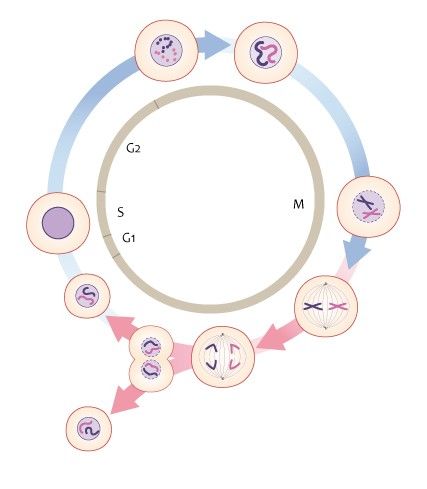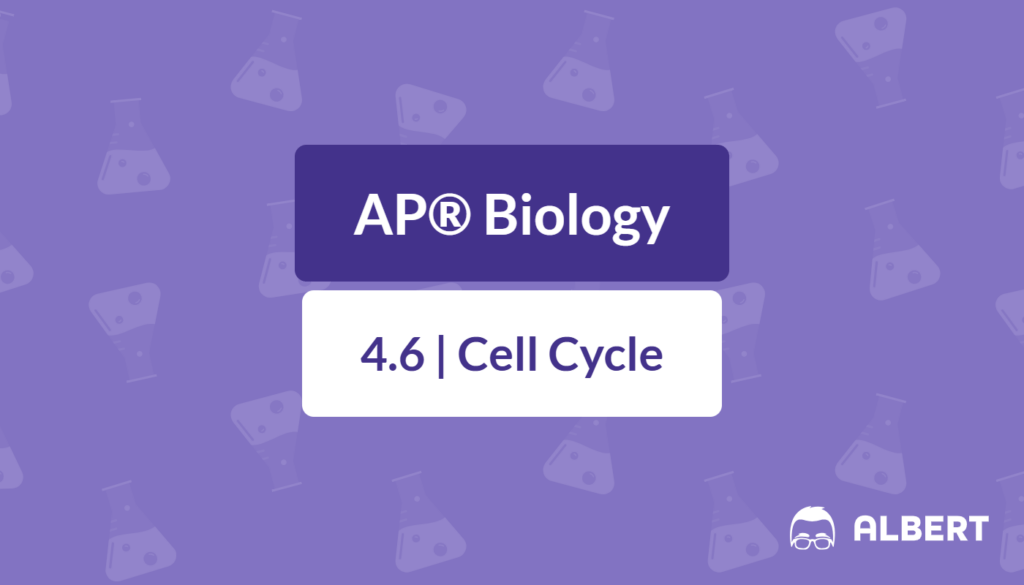What We Review
Introduction
If you’re preparing for the AP® Biology exam, a solid understanding of the cell cycle is crucial. Not only does the cell cycle lie at the heart of how eukaryotic cells grow, repair, and reproduce, but it also features prominently in exam questions about chromosome transmission and regulation. Below is a step-by-step review of the cell cycle, including its main stages, important checkpoints, and the purpose of mitosis.
What Is the Cell Cycle?
The cell cycle is the regular sequence of growth and division that eukaryotic cells undergo to produce new cells. Think of it as a carefully orchestrated process in which cells accurately pass on genetic information to daughter cells. It’s a cornerstone of growth in multicellular organisms and is critical for tissue repair and, in some organisms, asexual reproduction.
The Stages of the Cell Cycle

- Interphase
- Interphase is where a cell spends most of its time. It’s subdivided into three phases:
- G1 Phase (First Gap): The cell grows in size and begins preparing the necessary enzymes and organelles for DNA replication.
- S Phase (Synthesis): The cell replicates its entire genome, duplicating each chromosome to form two sister chromatids that will later separate during mitosis.
- G2 Phase (Second Gap): The cell undergoes final checks and continues to grow. The cell synthesizes key proteins for mitosis, ensuring it is ready to divide.
- Interphase is where a cell spends most of its time. It’s subdivided into three phases:
- Mitosis
- Mitosis is the process that distributes the duplicated chromosomes into two new nuclei. For the AP® exam, remember that mitosis ensures each daughter cell receives an identical set of chromosomes (IST-1.C). The stages of mitosis include:
- Prophase: Chromatin condenses into visible chromosomes, and the spindle apparatus starts to form.
- Metaphase: Chromosomes line up along the cell’s equatorial plane, ensuring each daughter cell will receive one copy of each chromosome.
- Anaphase: The replicated chromosomes (sister chromatids) separate and move to opposite ends of the cell.
- Telophase: Chromosomes decondense, nuclear membranes reform, and the cell begins to pinch in preparation for final division.
- Mitosis is the process that distributes the duplicated chromosomes into two new nuclei. For the AP® exam, remember that mitosis ensures each daughter cell receives an identical set of chromosomes (IST-1.C). The stages of mitosis include:
- Cytokinesis
- Cytokinesis is the division of the cytoplasm, resulting in two separate daughter cells. In animal cells, a cleavage furrow forms and constricts the cell membrane. In plant cells, a cell plate forms between the two new nuclei, eventually developing into a dividing wall.
Cell Cycle Regulation
Cells have built-in checkpoints to ensure each stage proceeds correctly:
- G1 Checkpoint: Checks for sufficient size, nutrients, and signals to proceed.
- G2 Checkpoint: Verifies DNA was replicated correctly without major damage.
- M Checkpoint (during metaphase): Ensures chromosomes are correctly attached to spindle fibers before anaphase.
G0 Phase: The Non-Dividing State
Sometimes, a cell leaves the cycle and enters a resting phase called G0, in which it no longer divides. Certain cells, such as mature neurons, typically remain in G0 long-term. However, some cells can reenter the active cycle if they receive the right signals.
Purpose of Mitosis
The main purposes of mitosis include:
- Growth: Multicellular organisms depend on mitosis to grow and develop from a single fertilized egg into a complex organism.
- Tissue Repair: Damaged or worn-out cells are replaced through mitosis.
- Asexual Reproduction: Some organisms use mitosis to produce offspring that are genetically identical to the parent.
Conclusion
Mastering the details of the cell cycle and mitosis is essential for the AP® Biology exam. Understanding each stage—G1, S, G2, Mitosis, and Cytokinesis—helps you see how cells faithfully pass on genetic material. Consider creating diagrams or flashcards for the 4 stages of mitosis, and be sure to practice questions that test your knowledge of checkpoints and the purpose of mitosis.
By reviewing these concepts and practicing regularly, you’ll be well-prepared for your AP® Biology exam—and you’ll have a thorough understanding of one of the most fundamental processes in biology.
Sharpen Your Skills for AP® Biology
Are you preparing for the AP® Biology test? We’ve got you covered! Try our review articles designed to help you confidently tackle real-world math problems. You’ll find everything you need to succeed, from quick tips to detailed strategies. Start exploring now!
Need help preparing for your AP® Biology exam?
Albert has hundreds of AP® Biology practice questions, free response, and full-length practice tests to try out.








